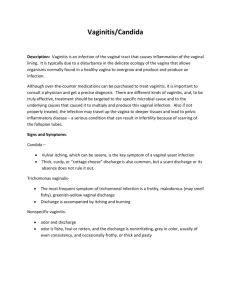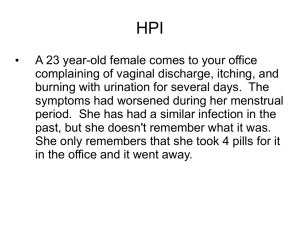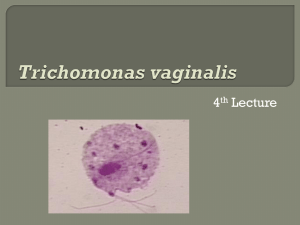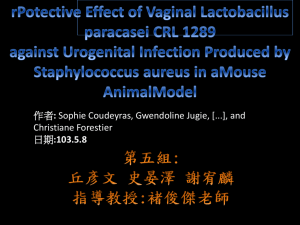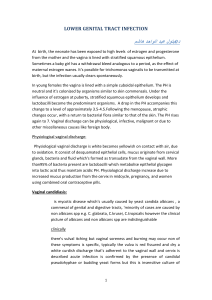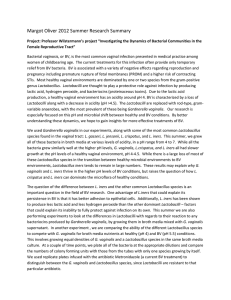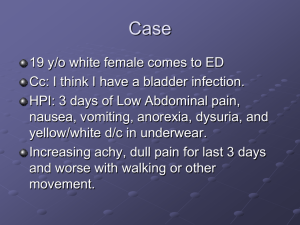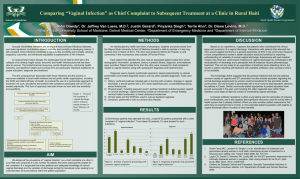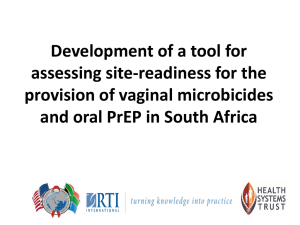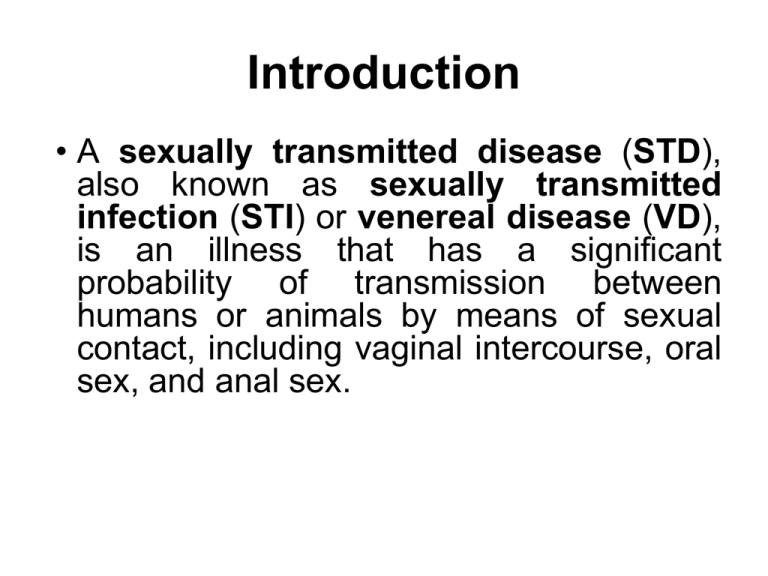
Introduction
• A sexually transmitted disease (STD),
also known as sexually transmitted
infection (STI) or venereal disease (VD),
is an illness that has a significant
probability of transmission between
humans or animals by means of sexual
contact, including vaginal intercourse, oral
sex, and anal sex.
Sexually Transmitted Infections
• Bacterial
• Yeasts and fungi
– Candida albicans
– Candida glabrata
– Candida tropicalis
–
–
–
–
Neisseria gonorrhoeae
Treponema pallidum
Chlamydia trachomatis
Haemophilus ducryei
(chancroid)
– Lymphogranuloma
– Mycoplasma
• Viruses
–
–
–
–
–
Herpes simplex II
Hepatitis B
Hepatitis C
HIV
Papillomavirus
• Parasites
• Trichomonas vaginalis
• Entamoeba histolytica
• Giardia intestinalis
• Ectoparasites
-
Sarcoptes scabiei
Phthirus pubis
Genus Trichomonas
• Its includes a group of flagellated protozoa
It infect humans and animal
Human Trichomonads:
• 3 species of trichomonads found in
human.
• Two are normally harmless.
• Pentatrichomonas hominis
• T. tenax
• T. vaginalis which is a serious sexually
transmitted pathogen.
Trichomonas vaginalis:
• It is the etiological agent of trichomoniasis.
• Trichomoniasis is a common sexually transmitted
disease with a worldwide distribution.
• transmittable, sexually and through contact with toilet
seats and towel.
• T. vaginalis despite it name, infect both men and
women.
• In females the organism inhabits the vagina and
urethra
• In males it is found in the urethra, prostate or, seminal
vesicles.
• The life cycle consist only of a trophozoite stage
which is transmitted by direct contact during
sexual intercourse
• both sexes equally susceptible
T. Vaginalis trophozoite
•
•
•
•
•
Fg=flagella
Bb=basal body
Nu=nucleus
Ax=axostyle
um=undulating
membrane
• Cy=cytostomal
groove
• Cs=costa
• (B) T. vaginalis
on the surface of
a vaginal
epithelial cell
prior to ameboid
transformation.
5 μm
• (C) Ameboid
morphology of
T. vaginalis as
seen in cell
culture.
5 μm
Life cycle: flagella are found in the genital tract.
Transmission: during dealings with contaminated matters (clothes,
cotton..etc.
Sign and symptoms:
•
•
•
•
T. vaginalis causes different manifestation in men and women.
Women are more likely to exhibit symptoms which tend to persist longer
Incubation period is 4-28 days.
In female ranges from asymptomatic, to mild or moderate irritation, to extreme
vaginitis
•
10 - 50%: asymptomatic
•
The commonest symptoms: vaginal discharge, vulval itching, dysuria, or offensive
odor , rare abdominal discomfort
•
Vaginal discharge: up to 70% - varying in consistency from thin and scanty to profuse
and thick; the classical discharge of frothy yellow occurs in 10-30% of women
•
Extreme cases associated with vulvitis and vaginitis
•
2%: strawberry cervix appearance to the naked eye.
•
Higher rates are seen on colposcopic examination.
•
•
•
•
5-15%: no abnormalities on examination.
In male 50-90% are asymptomatic
mild dysuria or pruritus
minor urethral discharge
Focus on pathogen: T. vaginalis
• females get a disintegration of vaginal epithelial
lining. Natural flora (bacteria ) keep the pH of the
vagina at 4-4.5 and ordinarily this discourages
infections.
• T. vaginalis can survive at a low pH.
• Once established it causes a shift toward
alkalinity (pH 5-6) which further encourages
its growth. There is a tendency to explain
stillbirths, spontaneous abortions, morbidity to
women who have vaginitis.
• Induces vaginal pH change, erosion of
normal mucosa in women
Physical Examination
• Pelvic examination:
– Inspection of external genitalia.
• Speculum examination:
– insertion and visualization of vagina and cervix,
obtaining swabs and slide specimens.
Vaginitis - Trichomoniasis
– Profuse, frothy discharge,
yellow-greenish in color
foul odor, vulvar pruritus
– Patchy vaginal erythema and
(strawberry cervix)
Diagnosis:
1-Specimens:
– vaginal discharge
– urine sediment
– prostatic secretion
1.Vaginal pH
2. Whiff test
3.Wet mount
4. Pap smear
5. Culture
6. Direct immunoflouresence assay
7. Polymerase chain reaction
8. Evaluation for other STDs
Potassium hydroxide amine test (Whiff test) :
Upon application of 10% potassium hydroxide (KOH) to a
vaginal swab sample, a fishy odor is released, which can
suggest trichomoniasis or bacterial vaginitis.
Whiff test: 10 % KOH
Phylum Ciliophora
• Possess cilia simple cilia or compound ciliary organelles during
some part of their life cycle
• Most species have 2 kinds of nuclei: macronuclei and micronuclei
• Some members of the phylum engage in sexual reproduction,
involving conjugation, autogamy, and ctyogamy
• Most ciliates are free-living; however, a few groups are
commensals or parasitic
•Family Balantidiidae, which includes only one genus and
species (Balantidium coli) are found in the intestinal tract of
arthropods and some vertebrates, including mammals
• Pathogens of humans, dogs and monkeys
•Swine are non-pathogenic carrier
•Mostly infect at Cecum,large intestine
•Balantidium coli cause Balantidiosis Ciliary dysentery
• Balantidiosis is most often found in tropical regions throughout
the world
• It is not a common human disease; the infection rate is less than
1%
• Pigs are a good source of infection for humans in areas where
they share habitation
•Cyst transmission (fecal oral)
Balantidium trophozite
Balantidium coli cyst
Life Cycle
• Both asexual and sexual reproduction
present
• Asexual by binary fission
• Sexual by conjugation
• Conjugation two opposite mating types
pair & exchange genetic material
Pathogenesis
• Balantidium coli produces proteolytic
enzymes that break down and digest the
intestinal epithelium.
Colon ulceration develops which allows for
infiltration by lymphocytes and leukocytes.
Hemorrhaging and secondary bacterial
infections will develop next.
Perforation of the large intestine and
appendix will occur.
Clinical Signs
• Mild infections occur with diarrhea,
• Abdominal pain
• Alternating periods of constipation
• Ulceration of the gut wall
Diagnosis
• Cysts-formed stools
• Active trophs-diarrheic stools
Control
• Eradication of fecal contamination of food
and water.
• Cysts killed by boiling
• Resistant to low doses chlorine (halide
tablets)
• Avoid practices that allow fecal-oral
contact
• Improved sanitation in institutions.



